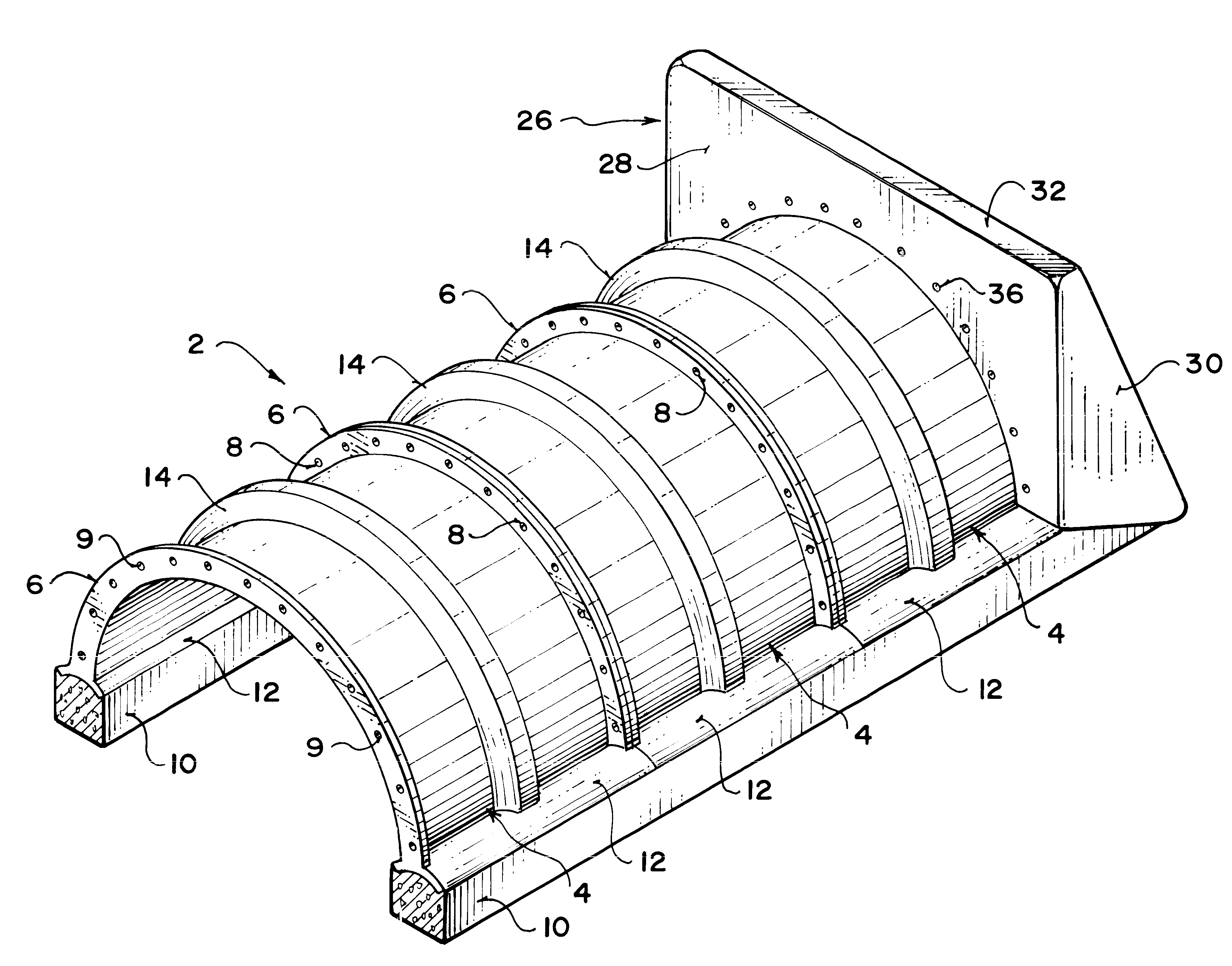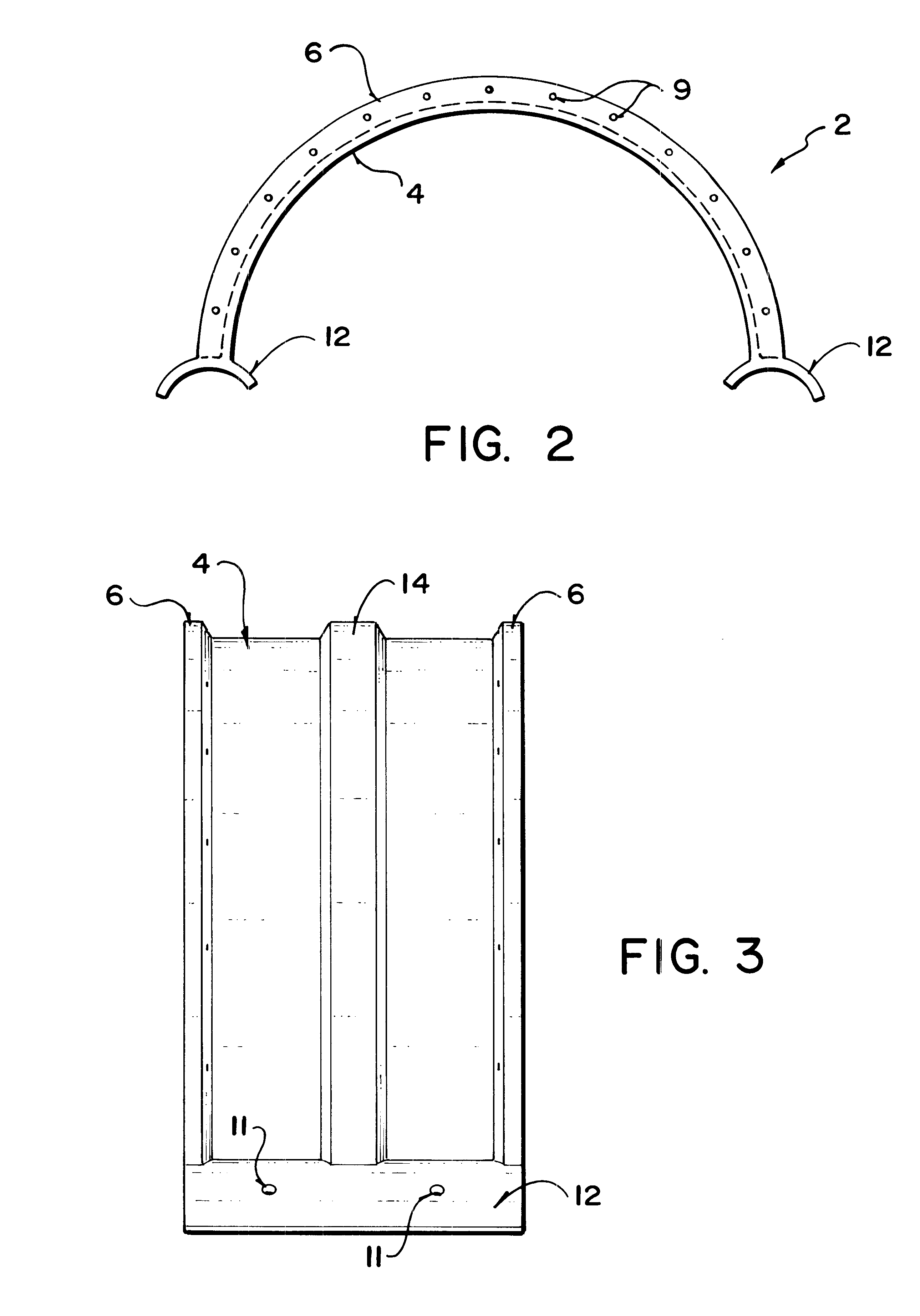Environmentally compatible archway for road building
a technology of archways and road structures, applied in the direction of sheet joining, underwater structures, artificial islands, etc., can solve the problems of further problems, damage to sensitive fish (including salmon) spawning beds, and harm to silt to move downstream
- Summary
- Abstract
- Description
- Claims
- Application Information
AI Technical Summary
Benefits of technology
Problems solved by technology
Method used
Image
Examples
Embodiment Construction
Referring to the drawings, FIG. 1 illustrates an isometric view of an "Enviro-Span" archway assembled from a series of adjoining bolted modules and a headwall at the far end. The assembled archway 2 illustrated in FIG. 1 is constructed of an end to end series of three semicircular ribbed modules 4 bolted together at adjoining flanges 6 by bolts 8. It is understood that as many modules can be bolted together in series, as is required to accommodate a specific archway site. The bases 12 of the adjoining modules 4, as shown in FIG. 1, rest on footings 10. The footings 10 shown in FIG. 1 are concrete, but it is understood that the footings can be logs cut on site, or hauled in, or some other suitable foundation.
The assembled archway illustrated in FIG. 1 has each module 4 bolted together by bolts 8 at adjacent flanges 6. Also, while only one headwall is shown in FIG. 1, it will be understood that both the upstream and downstream ends of the assembled archway 2 have a headwall generally ...
PUM
 Login to View More
Login to View More Abstract
Description
Claims
Application Information
 Login to View More
Login to View More - R&D
- Intellectual Property
- Life Sciences
- Materials
- Tech Scout
- Unparalleled Data Quality
- Higher Quality Content
- 60% Fewer Hallucinations
Browse by: Latest US Patents, China's latest patents, Technical Efficacy Thesaurus, Application Domain, Technology Topic, Popular Technical Reports.
© 2025 PatSnap. All rights reserved.Legal|Privacy policy|Modern Slavery Act Transparency Statement|Sitemap|About US| Contact US: help@patsnap.com



